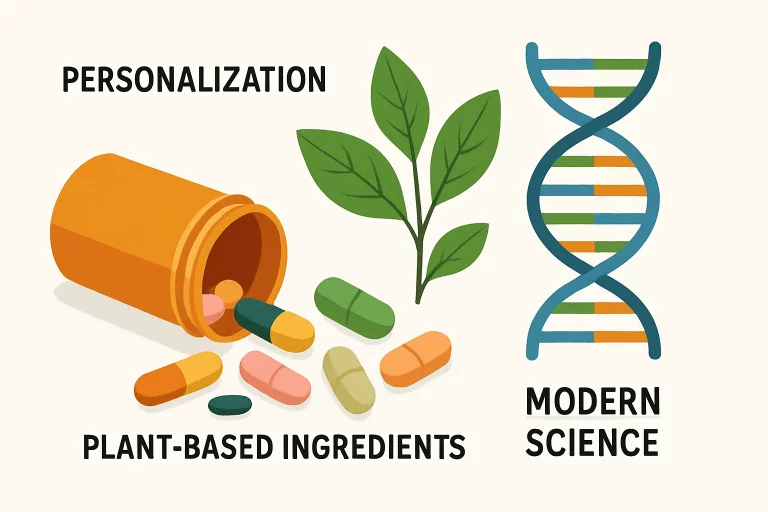The Science Behind mRNA Synthesis: From Lab to Life-Changing Therapies
Table of Contents
- What Is mRNA?
- The mRNA Synthesis Process
- Applications in Vaccine Development
- Therapeutic Applications
- Challenges and Solutions
- The Future of mRNA Technology
- Final Thoughts
Key Takeaways
- Discover the fundamentals of mRNA technology and its role in modern medicine.
- Learn about the stages of mRNA synthesis, from initial design to production.
- Understand the applications of mRNA technology in vaccine development and disease treatment.
- Explore the future potential of mRNA therapeutics and ongoing research efforts.
What Is mRNA?
Messenger RNA (mRNA) is a type of RNA that transports genetic information from DNA to the protein-making machinery of cells, including mRNA manufacturing. It is crucial in instructing cells to produce specific proteins essential for various cellular functions. Unlike DNA, which remains confined within the nucleus, mRNA travels to the cytoplasm, where proteins are synthesized. This process, known as translation, is vital for the proper functioning of cells. Understanding the basics of mRNA is essential for appreciating its pivotal role in modern biotechnology and therapies. The ability to manipulate mRNA has opened new frontiers in medical science, leading to the development of innovative treatments and vaccines.
The mRNA Synthesis Process
The mRNA synthesis process is a multi-stage procedure that begins with designing the mRNA sequence and ends with producing synthesized mRNA. This intricate process involves several key stages:
- Designing the mRNA Sequence: The initial step involves creating a precise mRNA sequence to translate into the desired protein. This requires a deep understanding of genetic code and protein synthesis.
- Transcription and Capping: In this stage, the designed DNA template is transcribed into mRNA. A cap is then added to the 5′ end of the mRNA molecule to enhance its stability and translational efficiency. This capping step is crucial as it ensures that the mRNA can efficiently translate into protein inside the target cells.
- Purification and Storage: The final steps involve purifying the mRNA to eliminate impurities and storing it under conditions that maintain its integrity. This is essential to ensure that the mRNA remains stable and functional until it is used.
Each of these stages ensures the accuracy and efficacy of the final mRNA product, which is vital for therapeutic applications. The meticulous attention to detail in each step makes mRNA technology promising for various medical applications.
Applications in Vaccine Development
One of the most groundbreaking applications of mRNA technology is in vaccine development. The COVID-19 pandemic has highlighted mRNA vaccines’ rapid and practical nature, which can be developed and distributed more quickly than traditional vaccines. Traditional vaccines often require the growth of pathogens in the lab, which can take months or even years. In contrast, mRNA vaccines can be designed and produced rapidly once the genetic sequence of the pathogen is known.
This not only speeds up the development process but also allows for rapid modifications in response to emerging variants, showcasing the flexibility and potential of mRNA technology in addressing public health crises. The success of mRNA vaccines against COVID-19 has spurred interest in using this technology to develop vaccines for other infectious diseases, potentially transforming the field of vaccinology.
Therapeutic Applications
Beyond vaccines, mRNA technology holds promise for treating various genetic and rare diseases. Researchers are exploring new ways to tackle previously considered untreatable conditions by leveraging mRNA to produce therapeutic proteins within the body. For instance, mRNA-based therapies are being investigated for Cystic Fibrosis and other genetic disorders. These therapies aim to introduce mRNA that encodes for functional proteins, thus compensating for the defective genes causing the disease.
The ability to design and synthesize mRNA for specific therapeutic purposes opens up new possibilities for personalized medicine. This could allow treatments to be customized based on an individual patient’s genetic makeup, leading to improved effectiveness and fewer side effects. This customized approach can potentially revolutionize the treatment of genetic diseases and conditions like cancer. The ability to specifically target and destroy cancer cells could lead to more effective and less toxic therapies.
Challenges and Solutions
Despite its potential, mRNA technology faces several challenges. These include issues related to stability, delivery mechanisms, and immune reactions. mRNA molecules are inherently unstable and can degrade quickly, posing a challenge for their use in therapeutic applications. Researchers are developing advanced delivery systems that protect mRNA and ensure it reaches target cells to address this. Lipid nanoparticles (LNPs) are a promising solution, encapsulating mRNA molecules to protect them from degradation and facilitate their delivery into cells.
Additionally, finding ways to overcome immune responses to foreign mRNA requires innovative strategies to modulate immune reactions effectively. Current research and technological developments are specifically aimed at addressing these challenges, which will make mRNA treatments more practical and effective. Scientists are actively investigating methods to alter mRNA to avoid detection by the immune system and improve its therapeutic capabilities.
The Future of mRNA Technology
The future of mRNA technology is promising, with potential applications expanding into cancer treatment, personalized medicine, and beyond. The mRNA landscape is expected to evolve as research continues, bringing new therapeutic avenues and medical breakthroughs. The flexibility of mRNA technology allows for rapid adaptation in response to emerging health threats and the personalization of treatments based on patient-specific genetic profiles.
As we harness these capabilities, mRNA-based therapeutics could revolutionize modern medicine, making once-intractable diseases manageable and even curable. The potential for mRNA technology to usher in a new era of medicine is immense, with ongoing research and innovation paving the way for groundbreaking advancements. The horizon of mRNA technology extends beyond its current applications, promising a future where the treatment of complex diseases becomes more precise and effective.
Final Thoughts
From its inception in the lab to its growing list of applications, mRNA technology is revolutionizing modern medicine. While challenges remain, progress hints at a future where mRNA-based therapies could become commonplace, transforming healthcare as we know it. The journey of mRNA from basic research to life-changing therapies underscores its transformative potential and signifies a new era in medical science.
This evolution is a testament to scientific ingenuity and a beacon of hope for millions of patients worldwide. As we continue to unlock the potential of mRNA technology, we edge closer to a world where genetic and previously untreatable diseases can be effectively managed, significantly improving the quality of life for countless individuals. The future of medicine is bright, powered by the pioneering advancements in mRNA technology.














